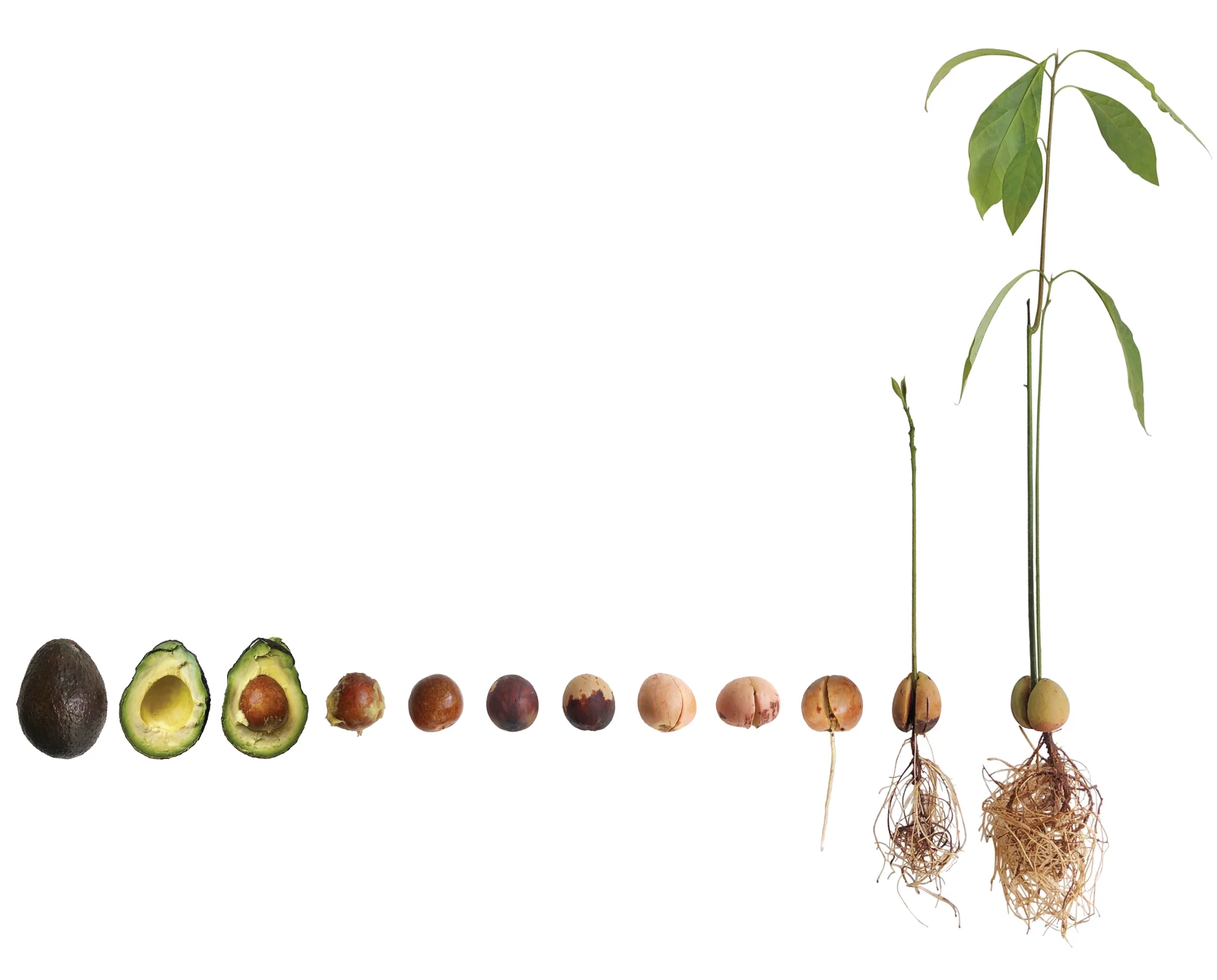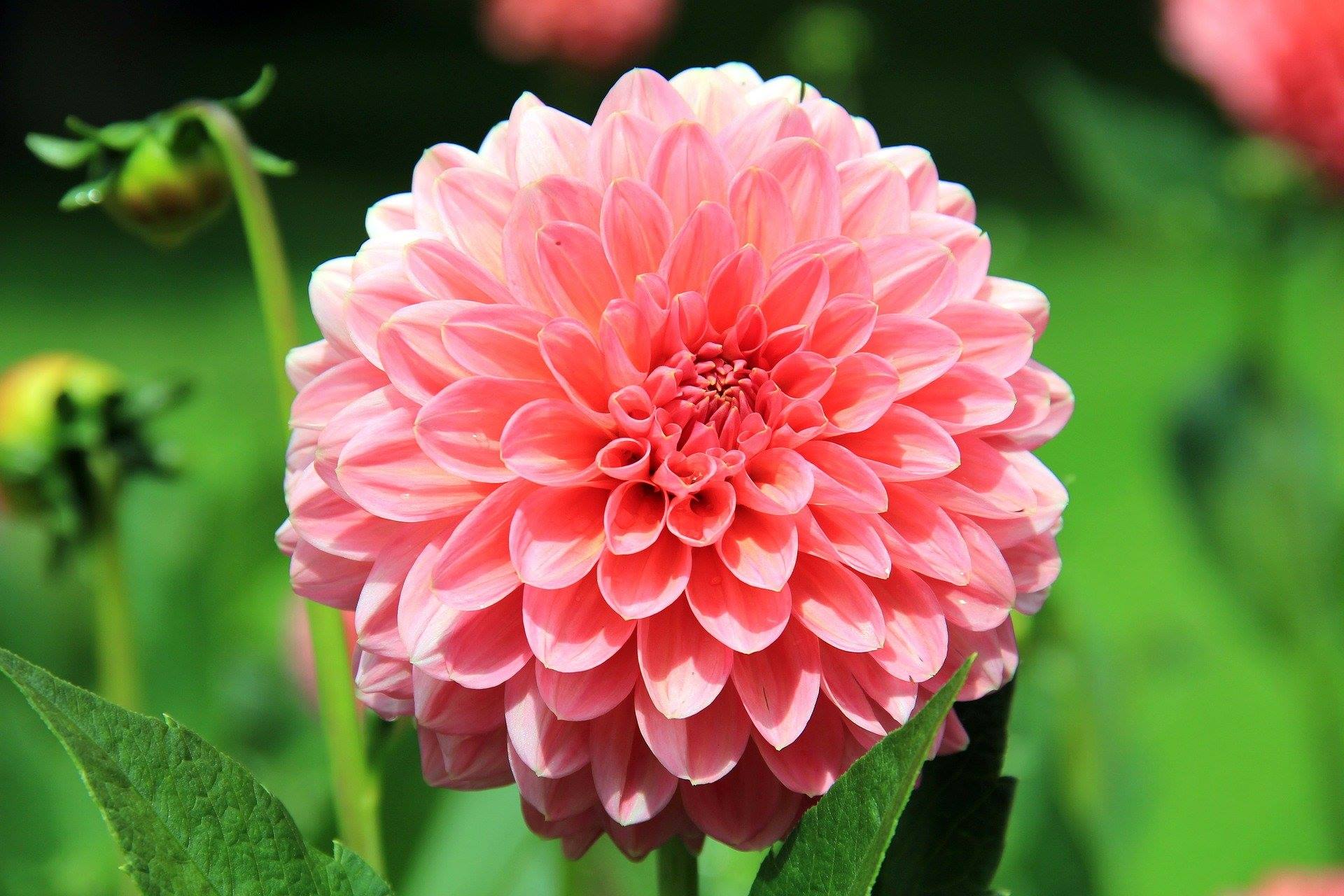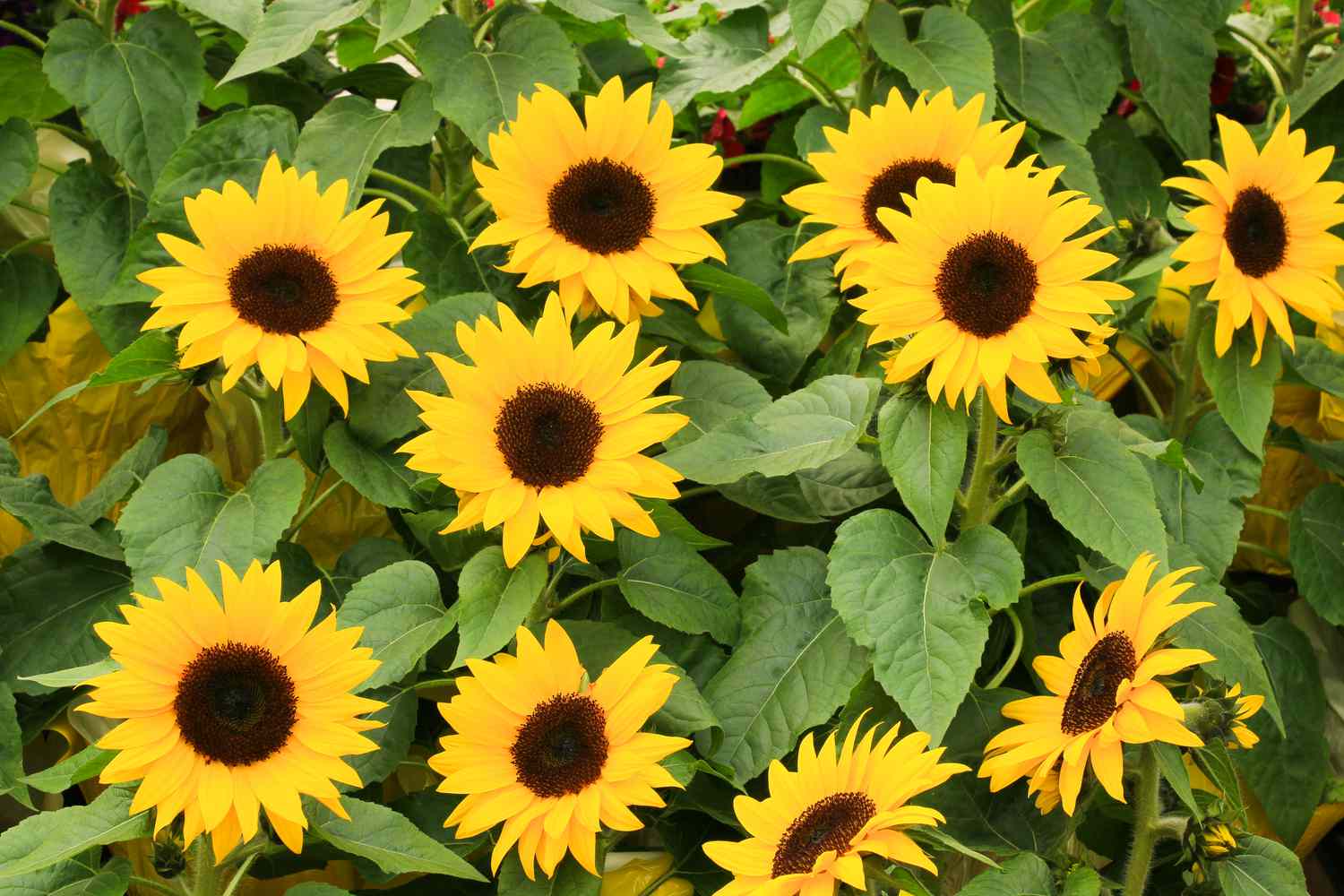Home>Types of Gardening>Ornamental Gardening>How Long Do Gladiolus Bulbs Take To Sprout


Ornamental Gardening
How Long Do Gladiolus Bulbs Take To Sprout
Modified: February 10, 2024
Learn how long it takes for gladiolus bulbs to sprout in your ornamental gardening journey. Discover the timeline for bulb sprouting and cultivation tips.
(Many of the links in this article redirect to a specific reviewed product. Your purchase of these products through affiliate links helps to generate commission for Chicagolandgardening.com, at no extra cost. Learn more)
Table of Contents
Introduction
Welcome to the world of ornamental gardening! If you have a passion for beautifying your outdoor space and adding a touch of elegance to your surroundings, growing gladiolus bulbs is an excellent choice. Gladiolus, commonly known as the sword lily, is a stunning flowering plant that produces tall spikes adorned with vibrant blossoms in a range of colors. As an SEO expert with a deep understanding of ornamental gardening, I’m here to guide you through the process of growing these magnificent bulbs and optimizing your results.
Growing gladiolus bulbs can be a rewarding and enjoyable experience, but it requires patience and knowledge of the key factors that influence their sprouting and successful growth. From the right planting conditions to the appropriate care techniques, each step plays a crucial role in ensuring robust sprouting and a bountiful display of blooms.
In this comprehensive guide, we will explore the various factors that affect gladiolus bulb sprouting, provide tips on creating optimal growing conditions, discuss the typical timeframe for sprouting, and address common issues that may arise. By the end of this article, you’ll have a solid understanding of how to encourage healthy sprouting and enjoy a flourishing gladiolus garden.
Factors Affecting Gladiolus Bulb Sprouting
Several factors come into play when it comes to the successful sprouting of gladiolus bulbs. Understanding these factors and providing the ideal conditions will greatly increase the likelihood of a thriving garden. Let’s take a closer look at the key elements that impact gladiolus bulb sprouting:
- Temperature: Gladiolus bulbs sprout best in temperatures ranging from 60 to 70 degrees Fahrenheit (15 to 21 degrees Celsius). If temperatures are too cold, they may not sprout at all, while excessively high temperatures can lead to stunted growth.
- Soil Drainage: Good soil drainage is essential for the sprouting of gladiolus bulbs. Waterlogged soil can cause the bulbs to rot and hinder sprouting. Ensure that the soil is well-draining, loose, and rich in organic matter to promote healthy growth.
- Sunlight: Gladiolus bulbs thrive in full sunlight, so it’s important to choose a location that receives at least 6-8 hours of direct sunlight per day. Insufficient sunlight can lead to weak sprouts and poor overall growth.
- Moisture: While gladiolus bulbs require well-drained soil, they also need consistent moisture to sprout and grow. Keep the soil moderately moist, but avoid overwatering, as this can cause bulb rot.
- Planting Depth: The depth at which gladiolus bulbs are planted can impact sprouting. Plant the bulbs around 4 to 6 inches deep, with the pointed end facing up. Planting bulbs too shallow or too deep may negatively affect their ability to sprout.
- Timing: The timing of planting gladiolus bulbs is crucial for sprouting success. These bulbs are typically planted in the spring, after the danger of frost has passed. Planting too early in cold soil can delay or prevent sprouting, while planting too late can result in bulbs not having enough time to establish roots before winter.
By considering and optimizing these factors, you can greatly improve the chances of successful gladiolus bulb sprouting. Providing the right conditions will give the bulbs a strong start and set the stage for a vibrant and thriving garden.
Optimal Conditions for Gladiolus Bulb Sprouting
Creating optimal conditions for gladiolus bulb sprouting is a crucial step in ensuring a successful and bountiful garden. By paying attention to the following factors, you can provide the best environment for your gladiolus bulbs to sprout and flourish:
- Location: Choose a sunny location that receives at least 6-8 hours of direct sunlight each day. Gladiolus bulbs thrive in full sunlight and need it to produce strong sprouts and vibrant blooms.
- Soil Preparation: Prepare the soil before planting by removing any weeds or debris and loosening it with a garden fork or tiller. Incorporate organic matter such as compost or well-rotted manure to improve soil fertility and drainage.
- Soil pH: Gladiolus bulbs prefer slightly acidic to neutral soil with a pH range of 6.0 to 7.0. Test the soil using a pH meter or a soil testing kit and amend it if necessary to achieve the optimal pH level.
- Planting Depth and Spacing: Plant gladiolus bulbs around 4 to 6 inches deep, with the pointed end facing up. Space the bulbs about 6 inches apart to allow for proper air circulation and prevent overcrowding.
- Watering: Keep the soil evenly moist during the sprouting period to provide the necessary moisture for the bulbs to sprout. Avoid overwatering, as excessive moisture can lead to bulb rot. Water deeply but less frequently to encourage strong root growth.
- Fertilization: Prior to planting, incorporate a balanced bulb fertilizer into the soil according to the recommended dosage. Additionally, apply a phosphorus-rich fertilizer when the sprouts reach around 6 inches in height to promote healthy growth and abundant blooms.
- Mulching: Apply a layer of organic mulch around the sprouted gladiolus plants to suppress weeds, conserve soil moisture, and regulate soil temperature. Use materials such as straw, shredded bark, or compost, being careful not to bury the sprouts.
- Protection from Pests: Monitor the sprouts for any signs of pest infestation, such as aphids or thrips. Additionally, protect the sprouts from common garden pests like rabbits or deer by using fencing or repellents.
Providing these optimal conditions will give your gladiolus bulbs the best chance to sprout vigorously and produce spectacular displays of color. Regular maintenance and care will ensure their continued growth and the overall health of your garden.
Timeframe for Gladiolus Bulb Sprouting
The timeframe for gladiolus bulb sprouting can vary depending on various factors such as temperature, soil conditions, and the specific variety of gladiolus. Generally, you can expect to see sprouts emerging from the soil within 2-3 weeks after planting. However, it’s important to note that some varieties may take slightly longer.
Gladiolus bulbs prefer soil temperatures around 60-70 degrees Fahrenheit (15-21 degrees Celsius) for optimal sprouting. If the soil is colder than this range, the sprouting process may be delayed, while higher temperatures can lead to faster sprouting. It’s essential to wait until the danger of frost has passed before planting gladiolus bulbs to avoid any potential damage.
Once planted, the gladiolus bulbs will gradually develop roots underground before the sprouts emerge above the soil surface. During this time, it’s crucial to provide consistent moisture and avoid overwatering, as excessive moisture can lead to bulb rot. Maintaining optimal moisture levels will support root development and facilitate the sprouting process.
As the weeks pass, you’ll begin to see the first signs of sprouting as the green shoots push through the soil. These sprouts will continue to grow upward, developing into tall spikes that will eventually bear the colorful gladiolus blooms. This growth period can take anywhere from 75 to 90 days, depending on the specific variety.
It’s important to note that the sprouting and blooming timeframe can also be affected by the location and climate. In warmer regions, where the growing season is longer, gladiolus bulbs may sprout and bloom earlier. In contrast, cooler regions may experience a slightly longer growing period.
Monitoring the progress of your gladiolus bulbs is an exciting part of the gardening journey. By observing the sprouting timeframe and closely monitoring the growth of your plants, you’ll be able to anticipate the arrival of the beautiful gladiolus blooms and prepare for a stunning display in your garden.
Tips for Encouraging Gladiolus Bulb Sprouting
If you’re looking to maximize the sprouting success of your gladiolus bulbs, here are some helpful tips to ensure optimal growth and a vibrant display of blooms:
- Pre-soaking: Consider pre-soaking your gladiolus bulbs in tepid water for a few hours before planting. This technique can help hydrate the bulbs and kickstart the sprouting process.
- Proper planting depth: Plant gladiolus bulbs at the appropriate depth, around 4 to 6 inches deep, with the pointed end facing upwards. Planting too shallow or too deep can hinder sprouting, so pay close attention to depth when planting.
- Using bulb dust: To deter pests and minimize the risk of bulb rot, lightly dust the gladiolus bulbs with a bulb dust or fungicide before planting. This can protect the bulbs during the sprouting period and promote healthy growth.
- Spacing: Give your gladiolus bulbs enough space to grow and spread their roots. Plant bulbs about 6 inches apart to allow for proper airflow and prevent overcrowding, which can hinder sprouting and overall growth.
- Regular watering: Consistent moisture is crucial for gladiolus bulb sprouting. Water the bulbs regularly, keeping the soil evenly moist but not waterlogged. Avoid overwatering as it can lead to bulb rot.
- Supporting stake: As the gladiolus plants grow taller, they may require support to prevent bending or toppling over. Install stakes or use a plant support system to help keep the tall stalks upright and stable.
- Mulching: Apply a layer of organic mulch around the sprouted gladiolus plants. Mulching helps regulate soil moisture, suppress weeds, and maintain a stable soil temperature, all of which contribute to healthy sprouting and growth.
- Regular fertilization: Feed your gladiolus plants with a balanced bulb fertilizer before and during the growing season. This will provide the necessary nutrients to support sprout development and encourage robust growth and blooming.
- Deadheading: Remove spent blooms regularly to redirect the plant’s energy towards producing new growth and additional blooms. Deadheading also helps maintain the plant’s appearance and promotes a longer blooming period.
- Monitoring pests and diseases: Keep a watchful eye for the presence of pests, such as aphids or thrips, and promptly take appropriate measures to control them. Additionally, be aware of common gladiolus diseases like fusarium wilt and take preventive measures, such as avoiding overhead watering and treating with fungicides if necessary.
By following these tips, you can create a favorable environment for gladiolus bulb sprouting and ensure a successful and vibrant garden. Remember to provide proper care and regular maintenance throughout the growing season to enjoy a spectacular display of gladiolus blooms.
Common Issues with Gladiolus Bulb Sprouting
While gladiolus bulbs are generally reliable and resilient, they can encounter certain issues during the sprouting process. Understanding and addressing these common issues can help ensure successful sprouting and keep your gladiolus plants healthy. Here are some frequent problems you may encounter when sprouting gladiolus bulbs:
- Slow or no sprouting: If your gladiolus bulbs are slow to sprout or show no signs of sprouting, it could be due to planting depth, temperature, or poor soil conditions. Check that the bulbs were planted at the correct depth of 4 to 6 inches and ensure the soil temperature is within the optimal range of 60-70 degrees Fahrenheit (15-21 degrees Celsius). Adjust these factors accordingly to encourage sprouting.
- Bulb rot: Bulb rot is a common issue that can occur when the bulbs are exposed to excessive moisture or poor drainage. It causes the bulbs to become soft, discolored, and eventually decay. Avoid overwatering and ensure the soil has proper drainage to prevent bulb rot. If you notice signs of bulb rot, remove and dispose of the affected bulbs to prevent the spread of disease.
- Pest infestation: Gladiolus plants can attract pests such as aphids, thrips, and spider mites. These pests can cause damage to the foliage and inhibit the sprouting process. Regularly inspect your plants for signs of pests and take appropriate measures to control them. This may involve using organic insecticides or implementing natural pest management practices.
- Disease susceptibility: Gladiolus plants are susceptible to diseases such as fusarium wilt and botrytis blight. These diseases can cause wilting, discoloration, and decay of the plants. To prevent disease, ensure good air circulation around the plants, avoid overhead watering which can promote fungal growth, and promptly remove any affected plant material.
- Poor quality blooms: If your gladiolus plants are producing small or weak blooms, it could be due to insufficient sunlight or inadequate nutrition. Ensure the plants receive adequate direct sunlight and provide regular fertilization with a balanced bulb fertilizer. This will help promote healthy growth, strong stems, and vibrant blooms.
- Overcrowding: Planting gladiolus bulbs too closely together can lead to overcrowding and competition for resources, resulting in stunted growth and decreased sprouting. Follow the recommended spacing guidelines of around 6 inches apart to allow each plant sufficient room to grow and develop a robust root system.
By being aware of these common issues and taking proactive measures, you can address problems early on and ensure successful gladiolus bulb sprouting. Proper care, regular maintenance, and providing optimal growing conditions will contribute to the health and vitality of your gladiolus plants.
Conclusion
Growing gladiolus bulbs can be a rewarding and fulfilling experience for any ornamental gardener. By understanding the factors that influence sprouting, creating optimal growing conditions, and addressing common issues, you can increase your chances of success and enjoy a breathtaking display of gladiolus blooms.
Remember to provide the ideal conditions for sprouting, including appropriate temperatures, well-drained soil, ample sunlight, and consistent moisture. Proper planting depth, spacing, regular watering, and fertilization are also essential for healthy growth and vibrant blooms. Be vigilant against pests and diseases that might hinder sprouting and monitor your plants regularly for signs of any issues.
By following the tips and recommendations provided in this guide, you can nurture your gladiolus bulbs from sprouting to blooming, resulting in a stunning landscape filled with the beauty and elegance of these remarkable flowers.
Now that you are equipped with the knowledge and understanding of gladiolus bulb sprouting, it’s time to put it into practice and witness the magic unfold in your garden. Happy gardening!






